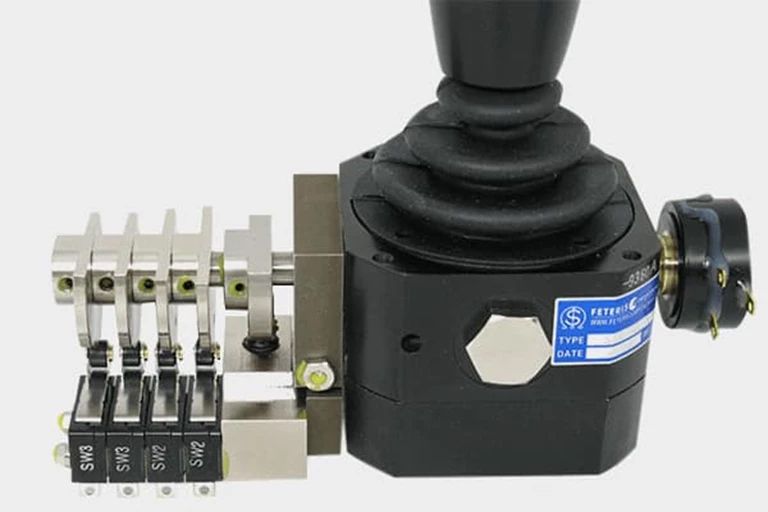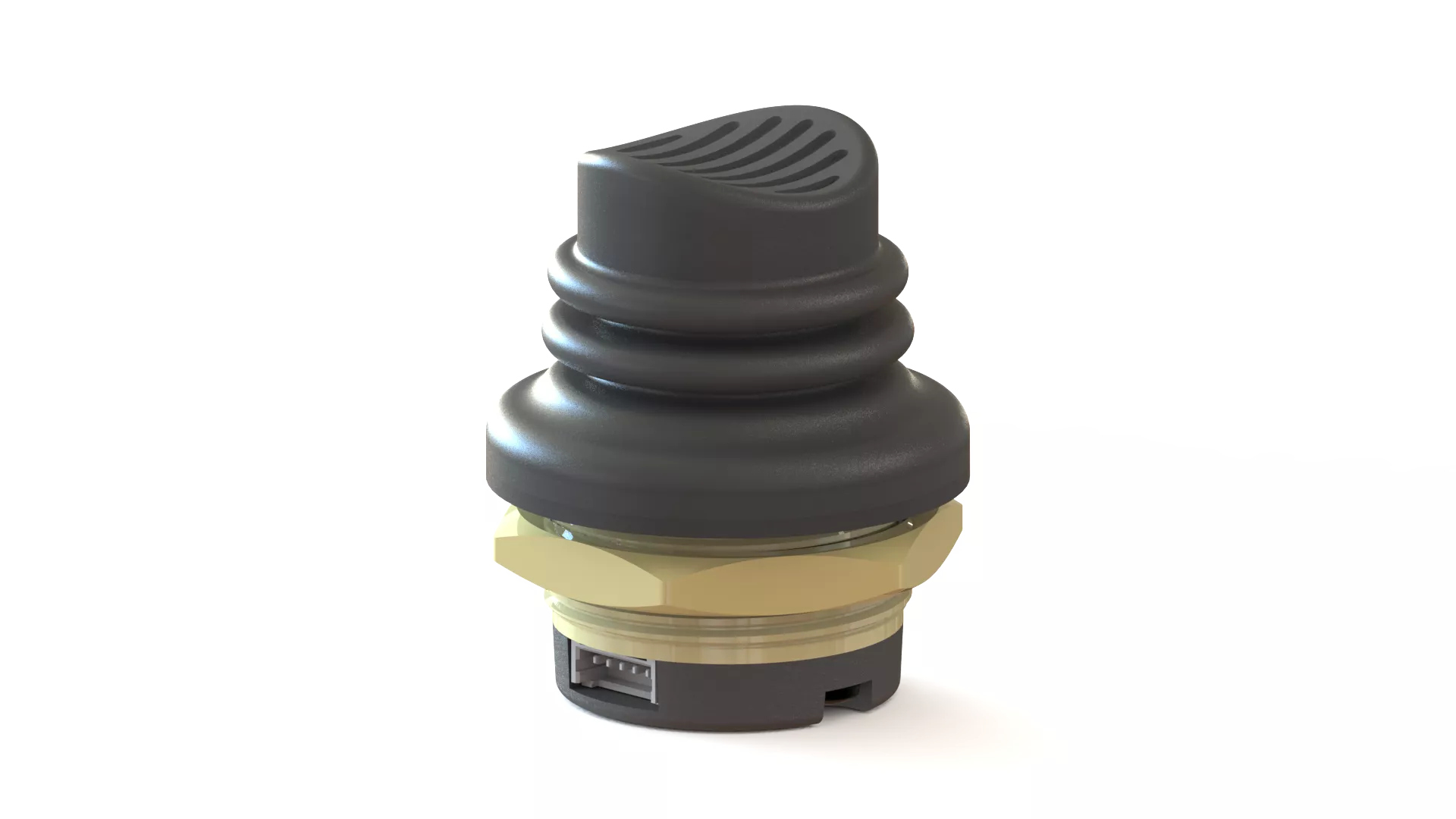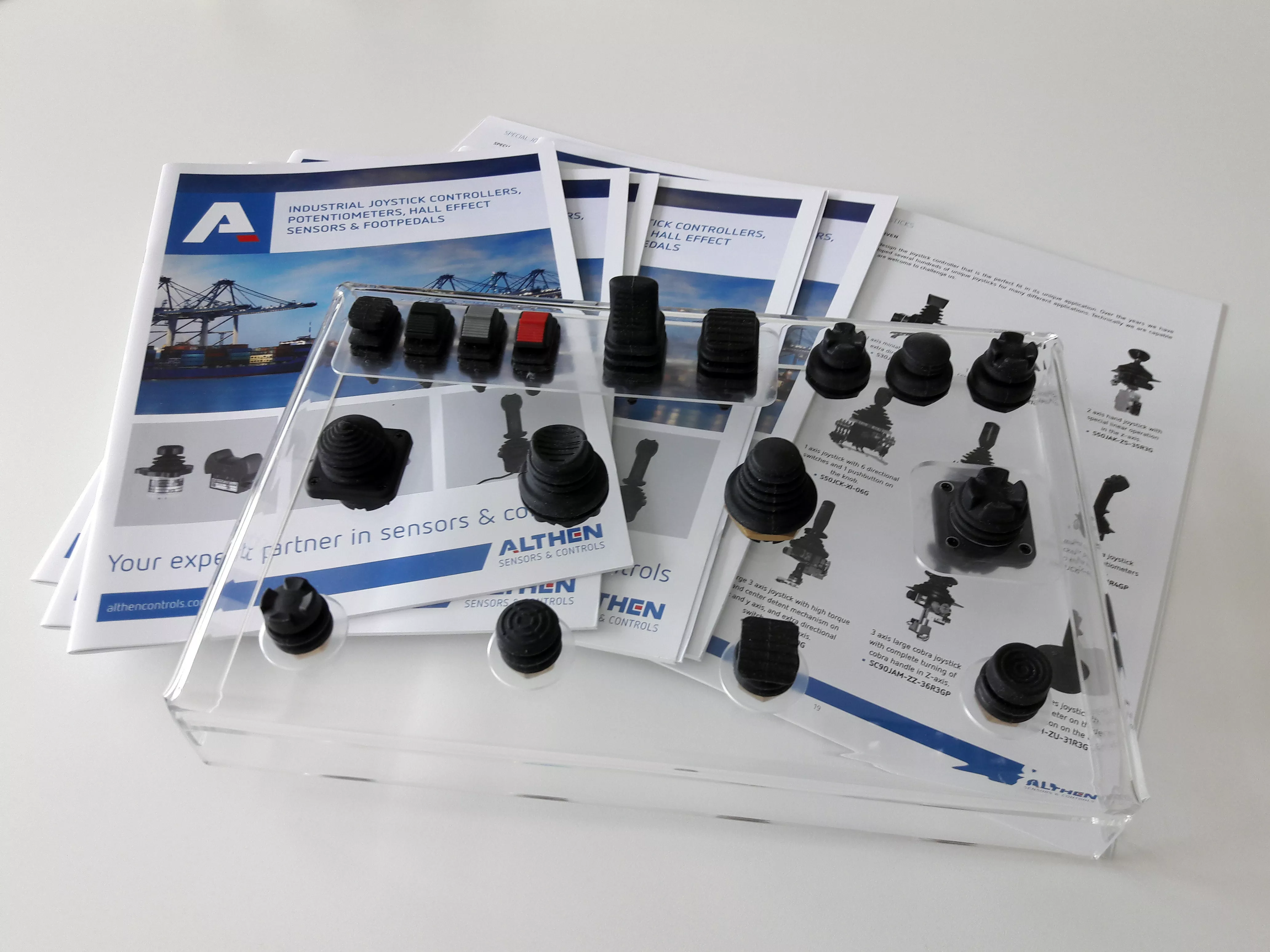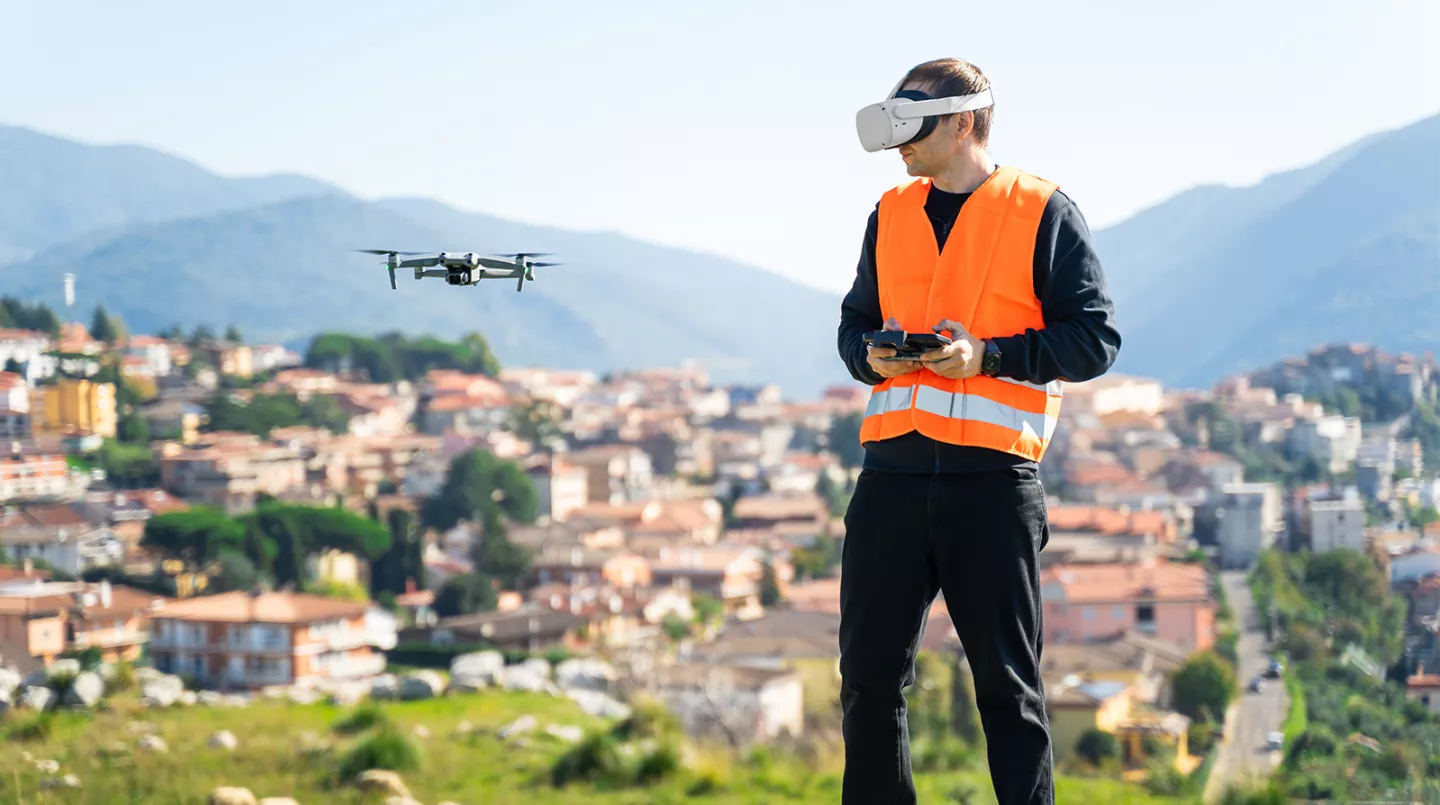Choosing a joystick model for your own application based solely on information on a website is difficult. This blog post shows why it is important to assess sample joysticks haptically and compare them with a variety of technical requirements before making a selection.
Sometimes minor differences in joystick operation
Anyone wishing to order a joystick from Althen will be closely supported by the Sensors & Controls experts during the selection process. Even if customers know which version they need - e.g. because they want to replace an existing device - we ask specifically for specifications and advise on the best possible joystick from our extensive portfolio. The decisive factor here is that interested parties always receive sample joysticks so that they can try out the suitability for the respective application in practice. Our Head of Product Management, Stefan Kunisch, knows what is important here: ‘Many joysticks appear to look similar, but there can be a big difference when you hold them in your hand. It's all about the small differences in the way they are operated: How does the knob feel? Do I slip or do I have a firm grip? Is the joystick ergonomic so that I can work with it for longer? Does the movement of the joystick match the real movement of the large machine and thus reproduce it one-to-one?’
Custom industrial joysticks
In a customer project in the area of wire rope hoists, for example, a harder control via the joystick with a longer travel was desired so that the real movement with a large wire rope hoist could be reproduced. By trying out different control levers, the customer's development department was able to select the most suitable model.

The operator should test
Anyone considering switching to joystick operation (e.g. from a button system) should also involve those in the company who will later work with the joysticks on a daily basis in the selection process. The haptic assessment is not only an issue for the development department, but also for the actual operators, who should test in practice whether the joystick is suitable for real operation. With our discounted demo joysticks, customers can also install and test them directly in the application's control board.

2-axis mini joystick for drone for land surveying
Ultimately, a sample also makes design planning easier, as was the case for a customer who manufactures drones for land surveying. A camera including a zoom function was to be integrated underneath the drone. All functions, from the actual control of the drone to the camera zoom, were to be controlled via a single remote control, which was difficult to realise due to the small size. Various sample models were used to assess the installation space and finally a biaxial mini joystick with two additional zoom switches that zoom in and out was integrated.
Many joysticks appear to look similar, but there can be a big difference when you hold them in your hand. It's all about the small differences in the way they are operated: How does the knob feel? Do I slip or do I have a firm grip? Is the joystick ergonomic so that I can work with it for longer? Does the movement of the joystick match the real movement of the large machine and thus reproduce it one-to-one?


It all comes down to the technical details
To help us select the right joystick for the application, we ask interested parties for detailed information on the type of application, the exact functionalities and special requirements. This includes considerations such as whether the joystick should be operated with individual fingers or the whole hand, whether a specific knob shape or additional switches are required. The number of axes must also be specified, as must the output signal or the degree of protection.
We have to go into great technical detail in order to be able to recommend a customised joystick. The more information we receive with the enquiry, the more targeted our advice on the selection will be and the more quickly we can provide various samples.



